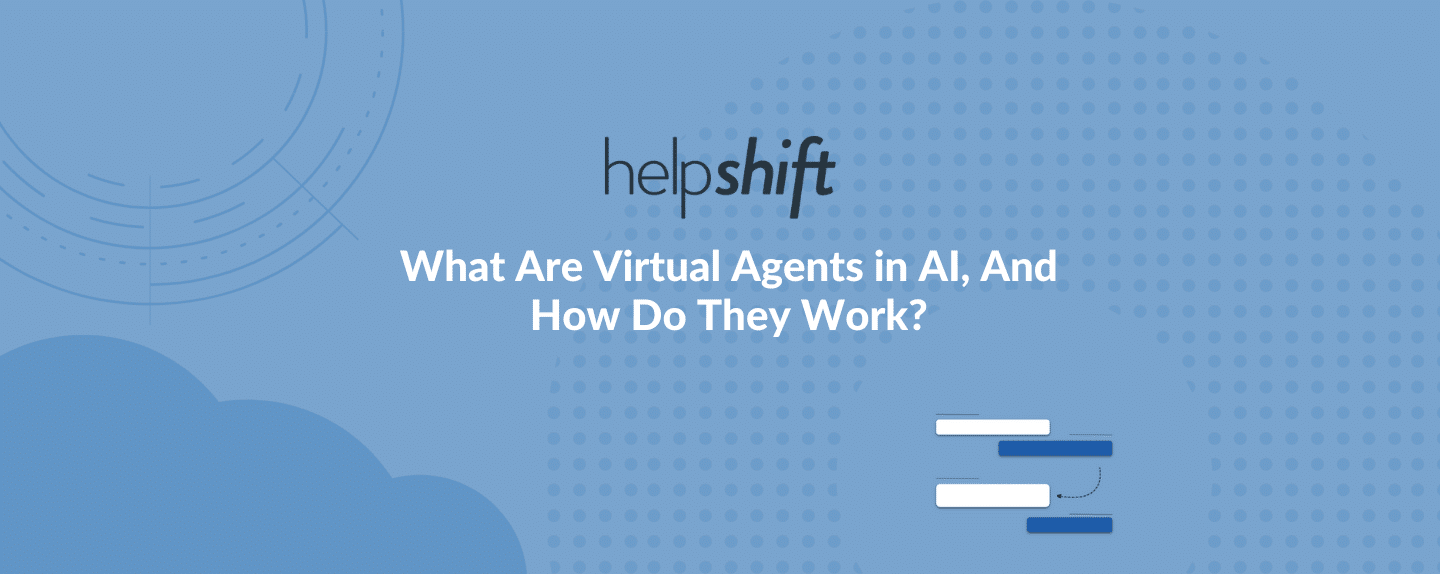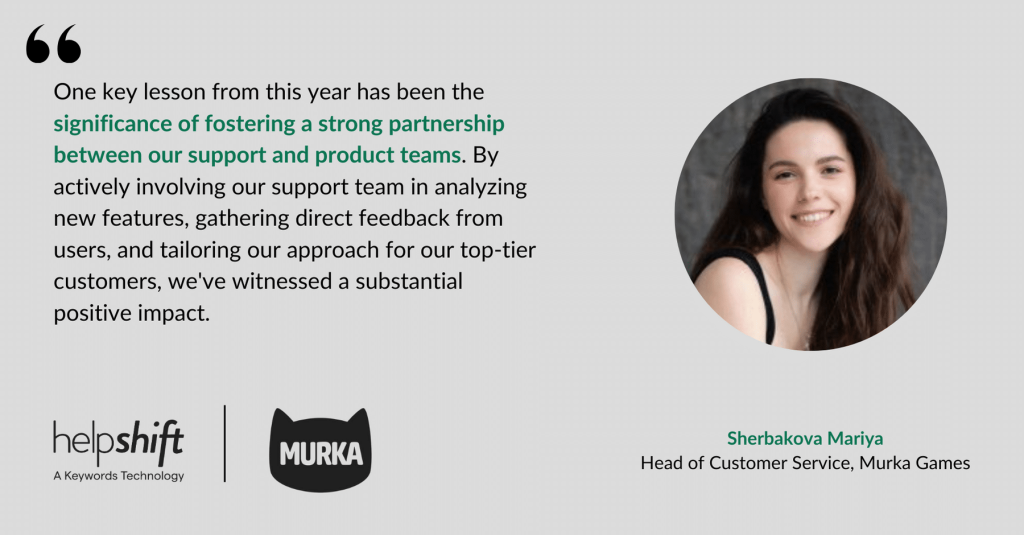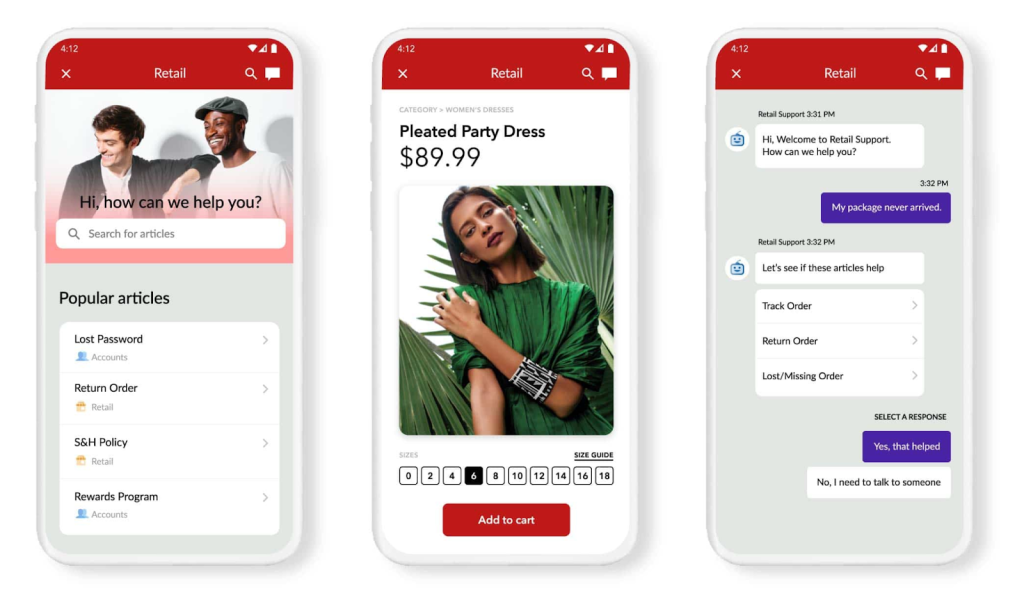Have you ever interacted with a chatbot or a virtual assistant? You may have asked Siri to play your favorite song or talked with a customer service bot to resolve an issue with your online purchase. Nowadays, virtual agents are becoming more and more common, and they’re radically changing how customers can interact with brands.
But what exactly are virtual agents, and how do they work? In this article, we’ll explore the fascinating world of this technology and how it could benefit your business.
What is a Virtual Agent?
A virtual agent is an AI-infused piece of software that is capable of automatically interacting with customers without the help of a human. It can take on different forms but is most often used in the form of a chatbot or voice-powered assistant (e.g. Alexa and Siri).
These intelligent programs use artificial intelligence (AI) to communicate through various channels, including messaging apps, websites, or mobile apps – which is why they are so useful for customer service teams. Virtual agents can understand natural language, interpret user requests, and provide helpful responses, making them a particularly invaluable tool for handling repetitive customer interactions while maintaining a human-like level of conversation.
From live chat support to sales assistance and even personal guidance, virtual agents can multitask. They can save businesses time and money by handling multiple customer queries and requests at any time of the day. This is why so many businesses have opted to use chatbots on their websites and apps.
As AI technology advances, virtual agents are becoming increasingly sophisticated, making them essential to modern customer service and support.
However, the term ‘virtual agent’ is often used interchangeably with similar terminology – but there are subtle differences in the definitions. Let’s take a look at them.
AI Virtual Agent vs AI Virtual Assistant
Think of a virtual agent as a specialized tool, while a virtual assistant is more like a personal assistant in your pocket. A virtual assistant is a tool designed to help with personal tasks such as creating shopping lists, arranging calendar events or searching the internet. These assistants are employed by individuals as opposed to organizations who require additional support for business functions.
In contrast, virtual agents are tools that help users interface with a brand and their set of services. In other words, these tools are employed by brands to help customers. For this reason, AI virtual agents are most commonly used in customer service – however, they can be employed in a lot of other ways too. For instance, virtual agents may be used by companies to guide customers through applying for a loan or filing an insurance claim.
Chatbots And Virtual Agents
When thinking about the differences between these two terms, it’s more a case of understanding their evolution. Ultimately chatbots are just an interface, and remain one of the main ways through which virtual agents and customers interact . Chatbot technology has advanced a long way over the years, which has allowed for greater capabilities for virtual agents.
Early versions of chatbots (before conversational AI) operated on pre-programmed rules, meaning they could only respond to specific keywords or phrases. The inputs had to be structured in a clear and specific way, or the chatbot’s responses were easily confused. As a result, these rule-based models were most suited to pre-defined tasks.
Today, evolutions in natural language processing (NLP) and conversational AI have provided more flexibility in when and where chatbots and virtual agents can be used.
Virtual agents can now understand and respond to user requests much like humans would. Helpshift’s conversational AI tool, for example, combines NLP with solution-based workflows to create virtual agents that can automatically resolve the most common support requests. When a customer approaches the bot with an issue, it can quickly and accurately classify the intent behind the request and offer the most effective path to resolution – rather than be restricted by pre-made workflows.
How Do Virtual Agents Work?
Virtual agents and virtual assistants both work in a very similar way, but here we’ll only be focusing on virtual agents
Over the years, virtual agents have employed various different methods to carry out tasks. These techniques have changed and evolved as technology has advanced, but include the following versions:
Simple, rule-based agents
These are the most commonly seen, and also the most simple in terms of capabilities. They operate based on specific triggers and pre-defined paths but can’t adapt or change from the predetermined script they’ve been programmed to follow. As a result, these agents are more suited to solving specific problems. However, the fact that every path and decision needs to be defined means they lack broader capabilities and the ability to carry out human-like interactions.
Response-based NLP agents
Response-based virtual agents use NLP to understand human language and generate appropriate responses to requests. NLP allows the system to analyze the structure and meaning of the user’s message and output a response from an extensive, pre-trained knowledge set (a well-known example of this is Amazon’s Alexa). These agents can be applied to resolve a wide variety of requests, but can become confused if a resolution requires multiple steps.
Next best response NLP agents
Next-best response agents are typically backed by modern AI and machine learning engines such as the OpenAI GPT engine. Here, the agent leverages NLP to understand a request and then generates the next best response. The customer can ask multiple questions, and the agent will retain information gathered in the previous interactions to formulate a response. This allows for agents to have multi-step conversations with customers. However, longer conversations have a higher risk of incorrect information and responses.
Hybrid Agent
Hybrid agents leverage a range of techniques that allow them to hold a human-like conversation, answer questions, and help users to resolve problems. For example, Helpshift’s AI virtual agents initially use NLP to determine the request and the intent behind it. This is used as a starting point from which the conversation is directed through the most appropriate workflow to solve the specific problem. This may include escalating the issue to a human team member, or using NLP to automatically respond from the brand’s existing knowledge. GPT enhances conversations and enables customer interactions with virtual agents to feel increasingly human-like.
How and Where to Use a Virtual Agent
Being as useful and flexible as they are, virtual agents can be used in a variety of settings. As mentioned, a majority of these settings revolve around a customer service function. What sorts of situations would be most suitable for them? Let’s take a look below:
Agents for technical support
A virtual agent can answer frequently asked questions, such as how to reset a password or troubleshoot a connection issue. This is common in an industry like IT where issues are often repetitive and simple to solve.
In these situations, customers can approach the agent (most often in the form of a chatbot) with their question or technical issue. The chatbot can ask pre-programmed follow up questions and guide users to a solution or a helpful resource based on their answers.
This is also why it’s beneficial to have a knowledgebase or FAQ section where virtual agents can send users and let them self-serve. Not only do customers tend to prefer this solution but it also lightens the workload on customer service teams.
Automate administrative tasks
It has been reported that workers are spending up to a third of their hours on administrative task. Adding to this, customer service wait times have grown 3x in the last few years. In other words, customer service teams shouldn’t have to be spending as much time as they are on admin duties.
With virtual agents, it’s possible to lessen this burden by having them be the first point of contact when customers are reporting an issue. Virtual agents can collect all pertinent issue information and customer details in order to streamline the whole process. Once the issue details have been collected, the agents will make real-time decisions as to how it should be routed – this includes escalating the issue to a human team member when necessary.
Provide customer updates and information
Virtual agents can also be applied to various customer service tasks, even outside of issue resolution. For instance, eccomerce brands can leverage the technology to provide real-time order status updates or the status of processing returns and refunds. A big benefit lies in the fact that it can operate 24/7, so global customers can receive the same level of service as domestic ones.
Virtual Agent Benefits
Businesses looking to improve their internal operations, customer service and customer satisfaction can benefit from virtual agents in several ways. Here are some of the key advantages:
Reduced pressure on human agents
Employing a virtual agent can reduce the workload and stress on human agents so they can focus on more complex problems and interactions. The result is a lower burnout rate, better productivity and all-round employee satisfaction. Customers will also benefit; 60% of them feel long lines are the most frustrating element of customer service so avoiding lines and receiving rapid responses from virtual counterparts will boost satisfaction.
Constantly improving
Implementing AI and machine learning algorithms means agents can constantly learn from interactions to improve their responses, leading to an improved customer experiences. More so, using a virtual agent presents a good opportunity to capture customer journey information and behavior insights. It’s possible to collate and analyze the most frequently asked questions, the most prevalent issues, where users encounter the most problems and more. With this data, it’s much easier to offer pre-emptive support.
Improved customer experiences
With 90% of customers expecting immediate responses to customer service queries, providing fast and effective answers is key to building loyalty. Virtual agents operate 24/7 and handle multiple inquiries simultaneously – this means customers don’t have to wait in line to receive instant help.
Reduced operational costs
Businesses can save money on training and additional agents by using a virtual agent to provide round the clock support. Gartner estimates virtual agents and conversational AI will save $80 billion in labor costs by 2026 as a result.
Scalability
Another large benefit is sheer scalability. Virtual agents are incredibly helpful for gowing companies because they can handle a high volume of inquiries. This means businesses can focus on scaling upwards, gaining new customers and expanding without having to invest too heavily in new human-led processes. In fact, by handling 80% of inquiries, virtual agent and chatbot technology can potentially cut customer service costs by 30%.
Looking Ahead
Virtual agents are leading the way in customer service in a world where technology is advancing at lightning speed. Businesses aren’t just limited to traditional chatbot functions anymore, as NLP and ML help them understand context, learn from past interactions, and deliver personalized responses that feel almost human.
As technology continues to evolve, businesses now have the opportunity to create a much more holistic experience for customers by leveraging virtual agents that can be applied to a range of scenarios. The future of customer interactions is one that brings together each strand of virtual agent technology to create a much faster, more accurate and more flexible experience. AI virtual agents aren’t a substitute for the human touch either. Though they can greatly enhance customer service, a fully optimized customer service experience involves hybrid virtual agents alongside human-powered support. Investing in both allows businesses to create customer experiences that aren’t just efficient but truly exceptional.




